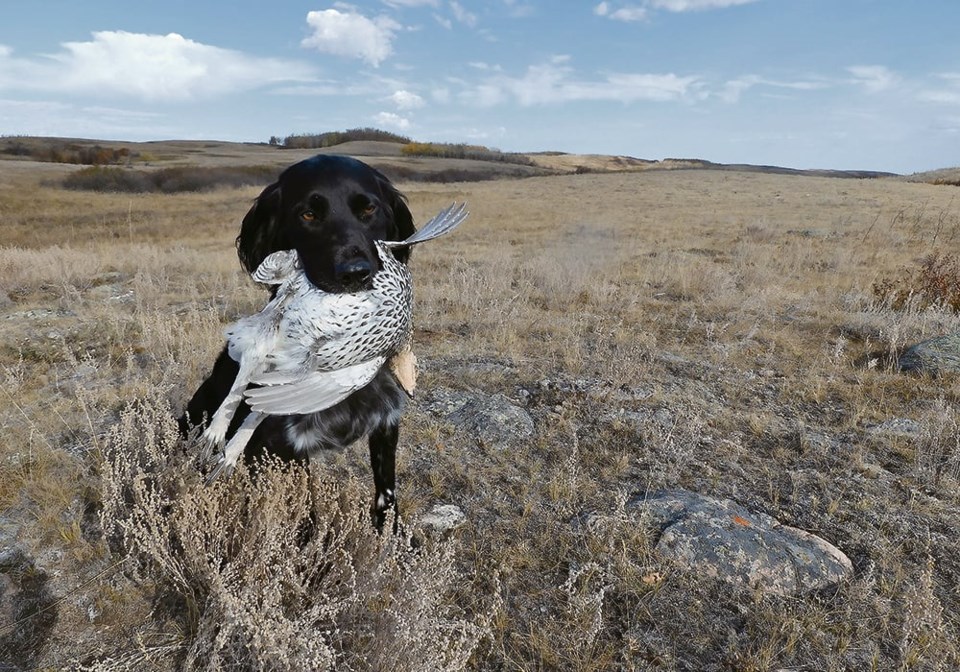The summer of 2021 and the six years before it were among the hottest on record. In Saskatchewan, rain came in decent amounts in some areas but not others. The Western Producer’s temperature and precipitation maps showed a dry belt from Saskatoon westward and then south.
Since 2013, I’ve been hunting sharp-tailed grouse on three community pastures and nearby farm and ranch land near Perdue, Sask. I took notes on every grouse that my pointing dogs and I flushed.
Before the bird went into my game bag, I gutted it and later took more detailed notes at home. These notes included what the grouse had eaten and stored in their crops, for a total of 166 grouse crops over the years.
The grouse ate seven types of main foods with 55 percent berries. Four additional types — berries, flower- and tree buds and bugs — were also eaten.
I found that grain (mostly waste wheat) and herbs (mostly green canola leaves) were the primary food during the dry 2021. The grouse seemed to find some snowberries but the other four berry species were rare in grouse crops or absent.
The following year, 2022, precipitation returned to near normal, as did berry production. Some grain and green leaves remained part of the grouse’s diet. However, they focused back on their preferred berries.
Did the drought cause a decline in grouse numbers overall? There is a subtle decline in the population long term but my sample of bagged birds in any one year is too small to tell.
Did my hunting contribute to the decline overall? Unlikely, because sharp-tailed grouse are on a long-term decline province-wide, despite reduced bag limits.
Research from different parts of the grouse’s range suggests that weather is key in determining grouse numbers during summer for brood-rearing and winter for food. In recent years, there has been an overall decline in insects, which are a crucial protein source for the rapidly growing chicks. Grasshoppers have declined in grouse crops, with a tiny uptick in 2022.
To use waste grain and herbs in the fall, the grouse seem to rely on the field border habitats. From the grass and shrub habitat on road allowances and low-lying or excessive-slope area in fields, they walk out into the stubble to feed.
These habitat areas seem small in relation to big pastures, but the cover is dense for camouflage, escape and shelter. More often than not, my dog and I found them there.
Snowfall has been encouraging in our area this winter, which will give the berries a head start. If the rains come in May, as is typical, and gently in June, the grouse should do well this summer. A cold and soaking rain can be good for grass, but is very hard on tender grouse chicks.
Joe Schmutz is a retired biologist living near Saskatoon.



